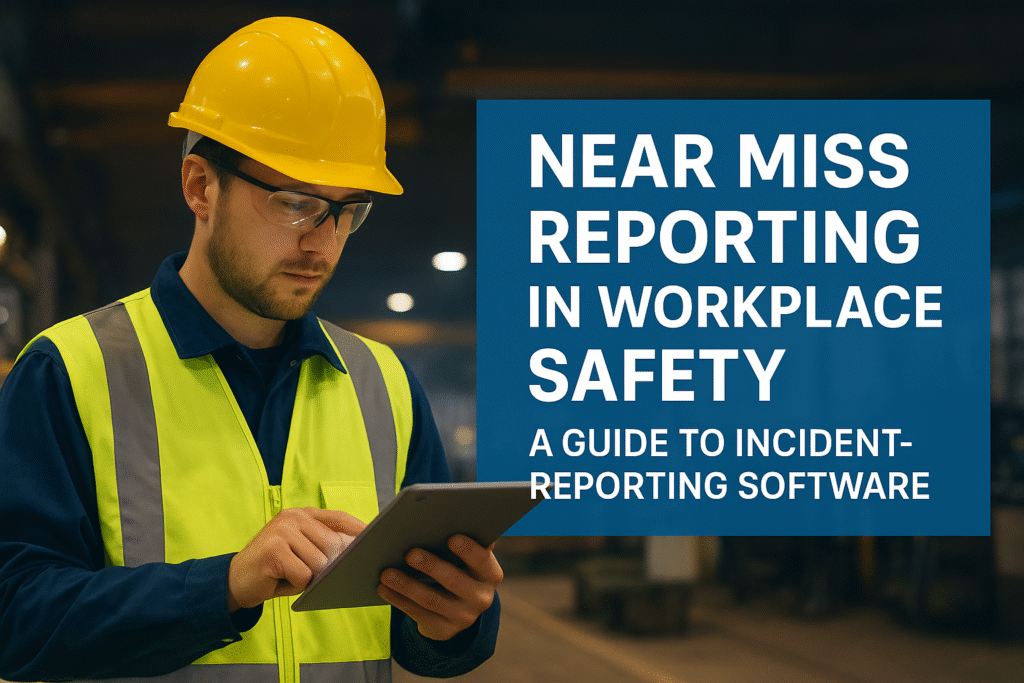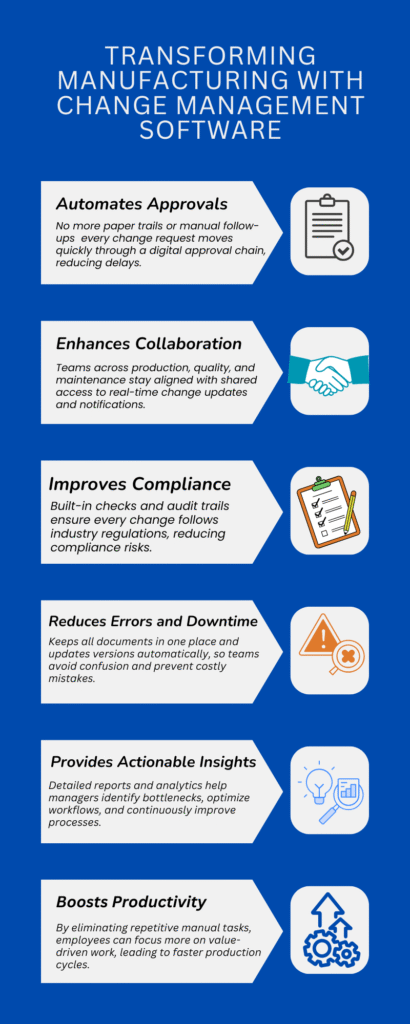How AI Is Automating Incident Reporting to Improve Workplace Safety and Compliance:
Incident reporting has always been a crucial part of workplace safety but for many years, it has also been slow, manual, and inconsistent. Paper forms, delayed submissions, unclear descriptions, and scattered follow-ups often lead to lost information and missed opportunities for prevention.
Today, AI-powered safety platforms are changing this. With intelligent digital tools and mobile-first reporting, organizations are eliminating manual barriers and enabling every worker to report incidents accurately and instantly.
In this blog article, we’ll explore how AI is transforming the entire incident reporting process making it faster, smarter, more accurate, and more proactive than ever before.
The problem: Manual Reporting Leads to Delays and Reduced Safety Visibility:
In many workplaces, incident reporting still relies on old, manual methods. Employees often spend time searching for the correct form, trying to remember details after the incident, and waiting for their reports to reach the safety team. This results in delays, incomplete information, and poor data quality. When reports are slow or unclear, safety leaders struggle to identify risks early, making it harder to prevent future incidents. To build a proactive safety culture, organizations need faster, easier ways for workers to report incidents and smarter tools that automatically improve the quality of every report.
- Mobile-first reporting allows workers to capture incidents instantly from anywhere.
- AI-powered tools analyze reports automatically and fill in missing details.
- Faster, clearer data helps safety teams respond quickly and prevent future incidents.
The Solution: AI-Powered Automation for Incident Reporting:
Modern AI platforms bring automation, accuracy, and speed to every step of the incident reporting process from the moment an incident occurs to the moment corrective actions are completed. AI completely transforms the workflow by making reporting faster, clearer, and more reliable. With mobile-first and voice-enabled tools, workers can instantly report incidents, hazards, or near misses using voice, text, or photos. Image AI automatically identifies hazards and risk factors, while the system auto-fills key fields to ensure accuracy, even allowing offline submissions for remote teams. This eliminates paperwork, reduces reporting time, and ensures no critical detail is missed.
AI also improves data quality by helping workers write clear and complete incident reports. It guides them while they type or speak, points out any missing details, and keeps the information consistent across all teams. Because of this support, many organizations see better clarity, higher accuracy, and stronger investigation results.
Beyond basic reporting, AI also helps with the investigation process. It automatically gives initial root-cause ideas, suggests corrective actions, and creates short, clear summaries for supervisors. This reduces manual work, helps close incidents faster, and improves learning across the organization. After incidents are logged, AI analyzes the data to spot patterns, highlight high-risk areas, and detect early warning signs.
When to Use Each AI-Powered Safety Tool:
| Use Case | Tool Type | What AI Helps With | Examples | Key Benefits |
|---|---|---|---|---|
| Instant, on-site or field reporting | Mobile Safety App | Voice-to-text, image analysis, auto-fill fields | Mobile EHS App, QR-based reporting | Faster reporting, reduced manual errors |
| Full investigation, corrective actions | Incident Management System | Writing assistance, root-cause AI, summary generation | Digital incident workflows, RCA tools | Better decision-making, stronger compliance |
| Simple hazard or near-miss reporting | Concern Reporting Tools | Voice capture, quick photo analysis, risk scoring | Hazard cards, kiosk reporting, WhatsApp bot | Improved reporting culture, quicker prevention |
| Audit & compliance monitoring | Digital Audit & Inspection Tools | Checklist automation, auto-score grading, instant reports | EHS audit platforms, mobile inspection apps | Consistent audits, reduced paperwork |
| Training & awareness improvement | E-Learning & Safety Training Platforms | AI-created training modules, auto-quizzes, risk-based suggestions | LMS, microlearning apps, VR simulations | Better skill development, fewer recurring incidents |
Real-World Results from AI Automation:
Organisations using AI-powered tools like Soft Designers’ Incident Tracking and EHS platform report significant safety and operational benefits. Features such as real-time monitoring, automated alerts, AI-based root-cause analysis, and mobile-first incident reporting enable faster, clearer, and more accurate incident handling. Automated workflows and compliance-ready reporting reduce administrative burden and human mistakes. Insights from dashboards and analytics help teams identify safety trends, repeat hazards, and high-risk zones enabling proactive prevention. Over time, this leads to fewer incidents, faster response times, stronger compliance, and a safer, more efficient workplace culture.

How AI Supports OSHA Reporting & Compliance
OSHA incident Reporting requires employers to maintain clear, accurate, and timely records of workplace incidents, including injury logs, investigation details, and yearly summaries. Companies must record incidents on OSHA Forms 300, 301, and 300A, report serious cases within strict timelines, and keep these records for multiple years.
AI-powered incident reporting tools make this process much easier and more reliable. With mobile-first reporting, workers can instantly submit incidents from the field, helping employers meet OSHA’s timely-reporting requirements. AI auto-fills required fields, checks data accuracy, and ensures that every report includes the key details OSHA expects, reducing the risk of incomplete or non-compliant records.
Digital logs and automated audit trails also support long-term recordkeeping, while AI analytics help identify trends and recurring hazards, strengthening both compliance and prevention efforts. For industries like construction, manufacturing, oil & gas, utilities, and logistics, AI-driven reporting not only improves OSHA compliance but also builds a proactive safety culture where risks are addressed before incidents occur.
How AI Is Automating Incident Reporting
AI shifts safety management from reactive response to proactive prevention, significantly boosting compliance.
OSHA Compliance (USA)
- Automated Recordkeeping: AI instantly captures incident data (video, time, location), streamlining the creation of mandated OSHA Forms 300, 300A, and 301.
- Real-Time PPE Monitoring: Computer vision checks adherence to Personal Protective Equipment (PPE) standards, immediately flagging non-compliance with 29 CFR Part 1910.
- Hazard Identification: Predictive AI analyzes data to pinpoint high-risk areas and procedures, supporting the General Duty Clause by preventing recognized hazards.
ISO 45001 Compliance
- Continual Improvement (Plan-Do-Check-Act): AI provides objective safety metrics (Clause 9.1), driving data-backed decisions for system improvement.
- Proactive Risk Assessment: AI constantly identifies new patterns and risks, ensuring an ongoing process as required by Clause 6.1.2.
- Corrective Actions (CAPA): AI streamlines the Root Cause Analysis (RCA) process and tracks the implementation and effectiveness of corrective actions (Clause 10.2).
Data Security and Ethics
Handling sensitive safety and personnel data requires stringent security measures.
- Encryption & Privacy: All data (at rest and in transit) must be encrypted, and systems must comply with data protection laws (e.g., GDPR, CCPA).
- Access Control: Strict Role-Based Access Control (RBAC) ensures only authorized safety and HR personnel can access sensitive incident details.
- Bias Mitigation: Algorithms must be continuously audited for fairness to ensure automated monitoring does not unfairly target specific groups or locations.
The Future of Incident Reporting
AI is transforming the future of incident reporting by making the entire process effortless, intelligent, real-time, and highly accurate. Instead of struggling with paperwork or remembering details later, workers can simply speak, snap a photo, or submit a quick report from their mobile device. AI takes care of everything behind the scenes filling in form fields, analyzing risks, identifying hazards, summarizing events, and even guiding corrective actions.


















